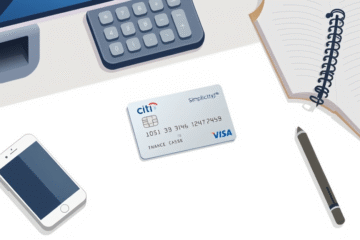Loan Types have become an essential financial tool in today’s economy, offering diverse solutions for different needs.
Understanding the various lending options available is crucial for making informed financial decisions.
From personal loans to secured financing and payroll-deducted alternatives, each option presents unique features and benefits that cater to specific financial situations.
This comprehensive guide will explore the main types of loans, helping you navigate through the choices and find the most suitable option for your needs.
Understanding Loan Types
To make informed decisions, it’s crucial to explore the main types of loans available today. Personal loans offer flexibility for various needs.
Secured loans provide lower interest rates by using collateral like a home or car. Payroll-deducted loans ensure ease in repayment.
- Personal Loans: Ideal for general expenses, they offer flexibility. Interest rates can be higher as they are typically unsecured.
- Secured Loans: These loans offer lower interest rates, using collateral as security, making it crucial to understand these risks.
- Payroll-Deducted Loans: Simplifies repayment through automatic deductions, ensuring timely payments and often lower interest rates.
Recognizing these types of loans helps in choosing the best financial solution. Your needs may dictate the loan’s suitability.
Consider interest rates, repayment terms, and financial capacity when deciding. Understand the various loan types for informed decisions.
Personal Loans
Personal loans are unsecured loans provided with flexible borrowing options and quick funding. They are typically used for large purchases, debt consolidation, or emergencies.
Since they don’t require collateral, they are easily accessible to most borrowers. For more details, visit Investopedia’s Guide
. With interest rates often ranging from 6% to 36%, depending on your creditworthiness, it is crucial to compare options. To explore rates further, check NerdWallet’s Comparison.
“Personal loans provide a lump sum which is repaid in regular installments over the loan term.”
This flexibility in repayment terms is appealing to many. However, if you fail to meet payments, your credit score can be affected.
- Pros: Quick funding, flexible terms, minimal documentation.
- Cons: Higher interest rates without collateral, risk to credit score if payments are missed.
Ultimately, personal loans are useful for managing significant expenses or consolidating debt under a single relevant payment plan. Still, careful analysis of terms is necessary to ensure they fit your financial capacity.
Secured Loans
Secured loans offer borrowers an opportunity to access funds by using an asset as collateral, such as a car or property. Learn more about secured loans.
Since the lender has a claim on the asset, secured loans generally offer lower interest rates compared to unsecured loans. This reduction in rates makes them attractive to individuals seeking larger borrowing amounts. The implication of using collateral is that the lender can repossess the asset if repayment terms are not met.
In contrast, unsecured loans do not require any collateral, increasing their risk and interest rates. Discover details about secured loans.
The table below highlights differences in terms of interest rates, risks, and borrowing limits:
| Aspect | Secured Loan | Unsecured Loan |
|---|---|---|
| Interest Rates | Lower | Higher |
| Risk | Lender risk is minimal | High lender risk |
| Borrowing Limits | Higher limits | Lower limits |
Secured loans appeal to many due to their advantages, but they do have drawbacks. Understanding these implications is crucial when choosing a loan type. Secured loans pose a lesser risk to lenders due to collateral, allowing for different terms compared to unsecured loans. As a result, risk management is effective with secured loans, hence they fit specific financial solutions. It is vital to thoroughly assess your ability to meet repayment terms when opting for secured loans.
Payroll-Deducted Loans
Payroll-deducted loans are a financial product where loans are repaid directly from a borrower’s paycheck. This automatic deduction system ensures timely payments.
The unique advantage of payroll-deducted loans lies in their ability to provide borrowers with consistent and stress-free repayment options. Since payments are automatically taken from salaries, individuals do not have to worry about remembering due dates.
Employers often collaborate with financial institutions to offer these loans, making them easily accessible. The benefits of payroll-deducted loans include:
- Automatic Payment: Scheduled deductions from paychecks help prevent missed payments and potential late fees.
- Convenience: Borrowers experience less hassle in managing multiple due dates and payment platforms.
- Lower Interest Rates: These loans often offer competitive interest rates due to the reduced risk of non-payment.
- Improved Budgeting: Consistent loan payments aid in better financial planning as they are aligned with pay cycles.
Studies have shown that payroll-deducted loans have become increasingly popular among employees due to their seamless repayment methodology.
Finance research indicates that nearly every employer is finding that employees appreciate the convenience and practicality of payroll-deducted loans. Research on Payroll-Deducted Loans
These loans often come with additional perks like interest rate reductions for prompt payments. It’s a financial tool that aids employees significantly in managing their liabilities seamlessly.
Interest Rates and Repayment Terms
When choosing a loan, interest rates and repayment terms are the most crucial factors influencing the decision-making process.
The interest rate directly affects the overall cost of the loan, dictating how much you will pay over time.
Loan terms can greatly impact your financial planning and borrowing experience. Long-term loans might have lower monthly payments.
However, they often result in higher interest paid over the loan’s lifespan, whereas short-term loans have higher payments but often cost less in interest.
Borrowers should carefully evaluate their financial capacity and compare their options.
A comparison chart is an excellent tool to highlight variations in interest rates among different loan types, assisting in this evaluation.
| Loan Type | Typical Interest Rate |
|---|---|
| Personal Loan | 5%-12% |
| Secured Loan | 3%-8% |
| Payroll-Deducted Loan | 4%-10% |
Utilizing these insights, borrowers can align loan choices with their financial goals, ensuring a balanced and informed financial decision.
Assessing Financial Capacity
Before applying for a loan, it’s crucial to evaluate your financial capacity to ensure you can manage the repayments. Begin by examining your debt-to-income (DTI) ratio, a significant indicator of financial health. This ratio is calculated by dividing your monthly debt payments by your gross monthly income. A low DTI ratio suggests a healthier financial situation.
Next, assess your savings and emergency fund. Determining whether you have enough savings to cover unforeseen expenses will help you gauge your readiness. This is particularly important because unexpected events could impact your ability to repay the loan. Look into your spending habits and develop a budget that facilitates saving.
Also, review your credit score and credit report for any inaccuracies or debts that could affect your loan application. Your credit score is crucial as it influences the interest rates and terms you’re likely to receive.
Consider the purpose of your loan and how it aligns with your financial goals. Ensure that borrowing aligns with long-term plans and does not overextend your finances. Think about alternative financing options, such as borrowing against a life insurance policy or a retirement account, if appropriate.
- What is my current debt situation?
- Can my budget handle additional repayments?
- How stable is my income source?
- Is my credit score healthy?
- Do I have a financial cushion for emergencies?
Borrowing without considering these aspects might lead to financial strain. Utilize resources like Loan Readiness Toolkit to make the process transparent and supportive.
Comparing Loan Options
Effective loan comparison requires evaluating multiple factors to make the best financial choice. Start by examining the Annual Percentage Rate (APR) as it reveals the total cost of borrowing. Utilize tools like the Bankrate Loan Comparison Calculator to evaluate associated costs. Transition to evaluating the repayment terms, ensuring they align with your financial capacity and goals. It’s vital to assess potential fees that could affect overall loan cost, such as origination or service fees. Consider using resources like the Moneyboat’s Guide to Compare Loans. Additionally, review customer reviews to gauge lender reputation. Incorporate a summary table to streamline the comparison process. Utilize the below table for a structured analysis:
| Feature | Details |
|---|---|
| Eligibility Criteria | Varies based on credit score and income |
| Repayment Schedules | Can be monthly, quarterly, or customized |
| Customer Reviews | Essential for understanding service quality |
Leverage different online platforms for updated comparisons by accessing services like NerdWallet. Thorough examination of these factors ensures a well-informed decision.”}
Choosing the right loan requires careful consideration of your financial situation and specific needs.
By understanding the different loan types and their features, you can make a well-informed decision that aligns with your financial goals and capabilities.



0 Comments